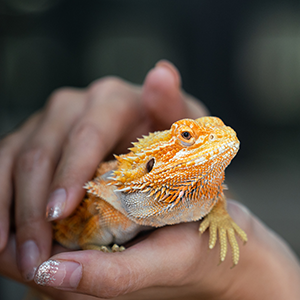


Small Animal and Exotic Veterinary Care in Westminster, CA
Your pet's health and happiness is our #1 priority, always.
Your Trusted, Comprehensive Vet Clinic in Westminster, CA
Westminster Veterinary Group is dedicated to providing quality health care with the highest level of compassion, integrity and service for you and your pet. Our dedicated doctors are assisted by a caring, knowledgeable and friendly staff.
We set the standard for excellence in veterinary care in our award-winning, state-of-the-art facility. We are fully equipped with the latest medical technology, including an on-premises laboratory, dental x-ray, and ultrasound.
Not only do we provide outstanding quality care for your dog or cat, but also provide expert care for your pet bird, reptile or exotic mammal. Several of our doctors are considered to be among the top experts worldwide in medicine and surgery of birds, reptiles, rabbits, ferrets and other exotic animal pets. We can also provide boarding for exotic pets on a limited basis.
New clients, save time before your first visit. Print out our new client form and bring it with you to your first visit.



Exotics in Westminster, CA
At Westminster Veterinary Group, our dedicated team provides quality healthcare with the highest level of compassion, integrity, and service for your beloved companions. We proudly care for both small animals—including dogs and cats—and a diverse range of exotics like guinea pigs, bunnies, reptiles, ferrets, and more!
- (714) 899-1100
- 6512 Westminster Blvd..
Westminster, CA 92683 - Monday - Friday: 8:00AM - 6:30PM
Saturday & Sunday: 9:00AM - 6:30PM - 150+ Google Reviews
Services We Offer
Symptoms We Treat
Why Pet Parents Love Us

-
We accept the CareCredit credit card as a flexible financing option to help you pay for the care your pet needs, when they need it.*
Click here to see if you prequalify with no impact to your credit score.
*Subject to credit approval. -
Appointments are recommended for routine care. For an urgent issue, please call us immediately, and we'll do our best to accommodate you as quickly as possible.
-
Yes, we have veterinarians experienced in treating a variety of exotic pets. Please call for specific information about your pet species.
-
Urgent care is for non-life-threatening conditions that require prompt attention, such as minor injuries, vomiting, or diarrhea. It's a step between routine care and emergency services, offering same-day treatment for acute issues. If your pet is experiencing an urgent issue, please call us and we’ll work to accommodate you as soon as possible.
Ready to Schedule Your Appointment?










